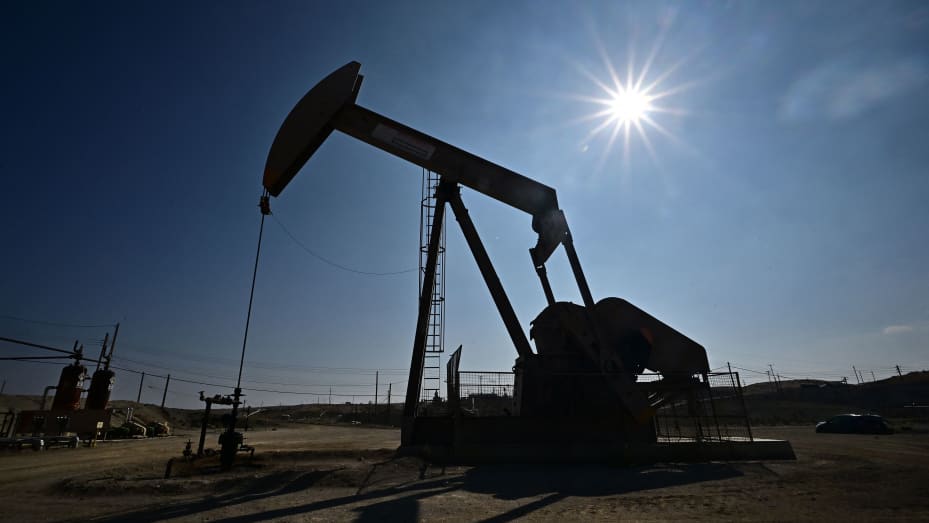
Navigating the Flux: Global Oil Market Amidst Geopolitical Tensions
Understanding the Impact of Geopolitical Conflicts and Strategic Decisions on Oil Prices and U.S. Crude Production | That's TradingNEWS
Global Oil Market Dynamics Amidst Geopolitical Tensions
In recent times, the oil industry has witnessed a notable flux, primarily influenced by geopolitical tensions and supply disruptions. A pivotal instance is the closure of Libya's Sharara oilfield, which has a substantial output of 300,000 barrels per day. This event, coupled with ongoing Middle East crises, has led to a significant uptick in oil prices. Specifically, Brent crude futures experienced an increase of 1.9%, settling at $77.59 a barrel, while U.S. West Texas Intermediate crude (WTI) saw a 2.1% rise, closing at $72.24.
The Influence of Geopolitical Conflicts on Oil Prices
The continuous conflict between the Israeli military and Hamas is anticipated to persist through 2024, raising concerns about a potential regional crisis that could impact oil supplies. Moreover, major shipping companies are cautiously navigating the Red Sea due to threats from Iran-aligned Houthi militants. Despite these challenges, the effect on oil tanker movements has been less severe than anticipated.
Strategic Moves in the Oil Industry
Oil prices also gained support following Saudi Arabia's actions to stabilize oil markets and Russia's decision to curb its crude oil production in December. These strategic moves by major players in the oil-producing world signify an emerging pattern of compliance and cooperation within the OPEC+ group, which has agreed to cut production by approximately 2.2 million barrels per day.
U.S. Crude Production: A Future Outlook
Turning our attention to the United States, projections from the Energy Information Administration (EIA) indicate that crude production will reach record highs in the next two years, although the growth rate might slow down. This is attributed to efficiency gains balancing out a decrease in rig activity, with an expected rise of 290,000 barrels per day, culminating in a record 13.21 million barrels per day this year.
NASDAQ:MBLY – A Financial Perspective
In the realm of stock market movements, NASDAQ:MBLY emerges as a key symbol to monitor. Investors and analysts keenly observe insider transactions and overall stock profile for indications of market trends and corporate health. Insider Transactions on NASDAQ:MBLY and Stock Profile - NASDAQ:TMO provide essential insights in this regard.
Interplay of Geopolitical Risks and Oil Market Reactions
Historically, the correlation between oil prices and geopolitical events has been complex and not straightforward. For instance, post the 9/11 attacks, Brent prices initially surged by 5% but then plummeted by about 25% within two weeks, reflecting concerns over weakening oil demand. Similarly, after Russia's invasion of Ukraine in February 2022, Brent prices initially soared by nearly 30% but then reverted to pre-invasion levels after about eight weeks. These fluctuations highlight the nuanced interplay between global geopolitical risk (GPR) and oil market dynamics.
Concluding Observations on Oil Prices and Global Shocks
Concluding this analysis, it is evident that oil prices are intricately linked with global shocks, whether economic or geopolitical. While short-term fluctuations are common, the overall impact of these shocks tends to be transient. This underscores the need for a nuanced understanding of the oil market, which is essential for informed monetary policy decisions and investment strategies.
Read More
-
Stock Market Today: AI Chip Rally Lifts Nasdaq as $7.1T Quad Witching Hits
19.12.2025 · TradingNEWS ArchiveStocks
-
XRPI at $10.50 and XRPR at $14.93 Hit XRP ETF Lows While XRP-USD Holds $1.84 After 30 Days of Inflows
18.12.2025 · TradingNEWS ArchiveCrypto
-
Natural Gas Price Forecast: Henry Hub Holds Around $4 as EIA Draw Hits 167 Bcf
18.12.2025 · TradingNEWS ArchiveCommodities
-
USD/JPY Price Forecast: Pair Holds Above 155 As BoJ And US CPI Set Up A Major Break
18.12.2025 · TradingNEWS ArchiveForex

















